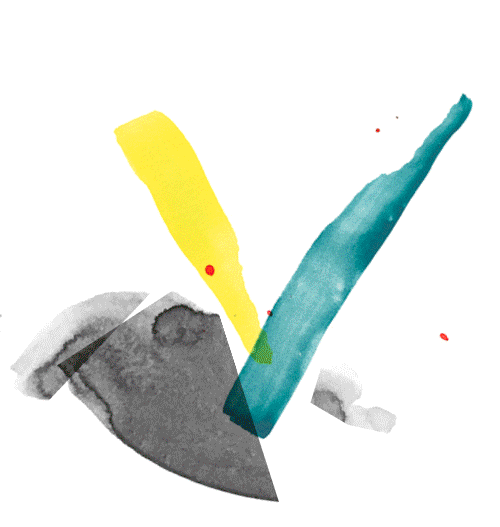

Sign up for our newsletters. You can change the settings or unsubscribe at any time.
Thank you for your subscription. We have sent you an e-mail with a confirmation link.


exp. 1
exp. 2
exp. 3

Till Gathmann
Was part of: exp. 1
Till Gathmann
Born 1977 in Paderborn, DE – lives and works in Berlin, DE
“How to start a design process: (1) Focus on the plans, references, objects, and fantasies of the counterpart. Pay particular attention to the way these are described. (2) Consider this material in the widest sense. (3) Memorize the images and ideas that emerge in this process as a way of getting closer to the material. (4) Consider these memories as models of understanding. (5) Find and assemble elements to objectify these models. (6) Concentrate on the material implications, the actual materiality of the objectified models (i.e. soft/hard, wire, bending) and follow their logic. (7) Use these objects to communicate with the counterpart, figure out if they can speak on their own terms.” (Till Gathmann)
IV: How Fear Can Dismantle a Body. Vis-a-Vis with two of four curators of the 11th Berlin Biennale
María Berríos, Lisette Lagnado
Conversation
Género y colonialidad en busca de claves de lectura y de un vocabulario estratégico descolonial
Rita Segato
Essay
Umbilical Cord Amulet
McCord Museum
Object
Weaving Solidarity
Renata Cervetto and Duygu Örs
Q&A
El primer nueva corónica y buen gobierno
Felipe Guamán Poma de Ayala
Chronicle
Grupo Experimental de Cine en acción
Gabriel Peluffo
Drawing
By using this website you agree to the use of cookies in accordance with our data privacy policy.

Till Gathmann
Was part of: exp. 1
Till Gathmann
Born 1977 in Paderborn, DE – lives and works in Berlin, DE
“How to start a design process: (1) Focus on the plans, references, objects, and fantasies of the counterpart. Pay particular attention to the way these are described. (2) Consider this material in the widest sense. (3) Memorize the images and ideas that emerge in this process as a way of getting closer to the material. (4) Consider these memories as models of understanding. (5) Find and assemble elements to objectify these models. (6) Concentrate on the material implications, the actual materiality of the objectified models (i.e. soft/hard, wire, bending) and follow their logic. (7) Use these objects to communicate with the counterpart, figure out if they can speak on their own terms.” (Till Gathmann)
Memorial to the Sinti and Roma Victims of National Socialism
Dani Karavan
Memorial
Hatred Among Us
Lisette Lagnado
Essay
Umbilical Cord Amulet
McCord Museum
Object
Museo de la Solidaridad Salvador Allende (MSSA) in Berlin
A conversation between María Berríos and Melanie Roumiguière
Conversation
New Look
Flávio de Carvalho
Performance
Grupo Experimental de Cine en acción
Gabriel Peluffo
Drawing
By using this website you agree to the use of cookies in accordance with our data privacy policy.

Till Gathmann
Was part of: exp. 1
Till Gathmann
Born 1977 in Paderborn, DE – lives and works in Berlin, DE
“How to start a design process: (1) Focus on the plans, references, objects, and fantasies of the counterpart. Pay particular attention to the way these are described. (2) Consider this material in the widest sense. (3) Memorize the images and ideas that emerge in this process as a way of getting closer to the material. (4) Consider these memories as models of understanding. (5) Find and assemble elements to objectify these models. (6) Concentrate on the material implications, the actual materiality of the objectified models (i.e. soft/hard, wire, bending) and follow their logic. (7) Use these objects to communicate with the counterpart, figure out if they can speak on their own terms.” (Till Gathmann)
Género y colonialidad en busca de claves de lectura y de un vocabulario estratégico descolonial
Rita Segato
Essay
Hatred Among Us
Lisette Lagnado
Essay
Umbilical Cord Amulet
McCord Museum
Object
El primer nueva corónica y buen gobierno
Felipe Guamán Poma de Ayala
Chronicle
Flávio de Carvalho: Fazenda Capuava
Archive of Lisette Lagnado
Photographs
I: Junto a las curadoras de la XI Berlin Biennale for Contemporary Art
Renata Cervetto, Lisette Lagnado
Conversation
By using this website you agree to the use of cookies in accordance with our data privacy policy.

Till Gathmann
Was part of: exp. 1
Till Gathmann
Born 1977 in Paderborn, DE – lives and works in Berlin, DE
“How to start a design process: (1) Focus on the plans, references, objects, and fantasies of the counterpart. Pay particular attention to the way these are described. (2) Consider this material in the widest sense. (3) Memorize the images and ideas that emerge in this process as a way of getting closer to the material. (4) Consider these memories as models of understanding. (5) Find and assemble elements to objectify these models. (6) Concentrate on the material implications, the actual materiality of the objectified models (i.e. soft/hard, wire, bending) and follow their logic. (7) Use these objects to communicate with the counterpart, figure out if they can speak on their own terms.” (Till Gathmann)
Museo de la Solidaridad Salvador Allende (MSSA) in Berlin
A conversation between María Berríos and Melanie Roumiguière
Conversation
Teatro da Vertigem
Monograph
Being in Crisis together – Einander in Krisen begegnen
Feminist Health Care Research Group (Inga Zimprich/Julia Bonn)
Online workshop
III: La familia son quiénes se alegran con nuestros actos diarios. Detrás de las curadoras de la XI
María Berríos, Agustín Pérez Rubio
Conversation
Weaving Solidarity
Renata Cervetto and Duygu Örs
Q&A
IV: How Fear Can Dismantle a Body. Vis-a-Vis with two of four curators of the 11th Berlin Biennale
María Berríos, Lisette Lagnado
Conversation
By using this website you agree to the use of cookies in accordance with our data privacy policy.
By using this website you agree to the use of cookies in accordance with our data privacy policy.




